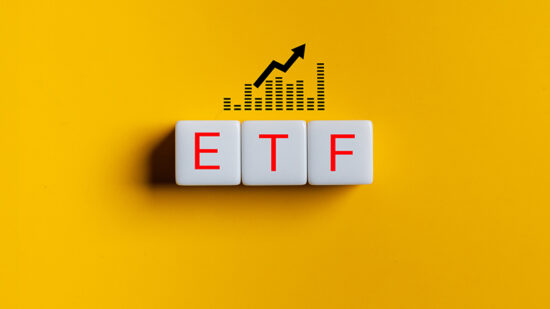After a year of rallying equity markets, investors who played it safe in money market funds and cash savings accounts are likely feeling as though they have missed out.
The S&P 500 came roaring back over the past 12 months following a challenging period for equities. The index soared 24.2% whereas your typical savings account yielding 5% – which may have seemed generous last year – is comparatively disappointing.
Investors who stayed cautious amid rallying markets may be kicking themselves for missing the boat, but John Lloyd, lead for Janus Henderson’s multi-sector credit strategies, said there are still ways to capture growth in their portfolios.
There’s no time like the present
The main thing to remember is that there is never a perfect time to invest. Many people hold off and wait for the prime moment to invest their savings, but in doing so, miss the upswing itself.
It is impossible to predict how markets will behave in the future, so the only way to ensure exposure to any upside growth is to be invested in the first place.
“Investing is about acting today without knowing what the future holds,” Lloyd said. “Arguably, the greatest illusion investors must overcome is that they can (or need to) predict the future to be successful.
“The future is inherently unknowable, and even if one could correctly predict what will happen, knowing how or when it will happen remains obscure.”
Ironically, playing it safe and sitting in cash can be more stressful than being invested in markets if returns take off without you, as we have seen over the past year. Equity valuations have soared and those who were not part of the rally are now concerned that they would be investing at the peak.
“Sitting on the sidelines places investors in a position where they are frustrated by good news, and might even hope for bad news so markets will decline,” Lloyd added. “In this way they are like farmers who have decided not to plant hoping for a severe drought to prove themselves right.
“This upside-down incentive system can be extremely taxing on an investor’s psyche, as each blip in the market makes one agonize over one’s position.”
Much of the market has yet to rally
Equity indices may be up substantially over the past year, but that does not mean the whole market has rallied – there are many undervalued sectors and asset classes that have yet to rebound.
Indeed, the 10 largest companies in the S&P 500 account for over a third (34.1%) of the whole index. They made the highest returns over the past year and their disproportionately large weightings brought the performance of the whole index up with them.
There is still a huge part of the market that has yet to rally to the same extent, according to Lloyd. But it is not just equities where investors can find these mispriced opportunities.
Lloyd said other asset classes such as fixed income offer the chance to invest pre-rally. Core US bonds, for example, have yet to rebound because they are closely tied to interest rates. Once the Federal Reserve cuts rates, it could be an attractive part of the market to have exposure to.
“The conditions for bonds to outperform are firmly in place and rates have not yet moved to reflect that, creating opportunity for investors,” Lloyd said.
Fixed income has a reputation for being a slower and steadier asset class compared to equities, but Lloyd noted that investors often made higher returns from bonds than simply sitting in cash savings accounts.
“In the current cycle, cash has outperformed core bonds so far – a deviation from prior cycles,” he said. “We believe this trend is set to reverse once rate cuts appear imminent, resulting in core bonds once again outperforming cash, as they have in previous cycles.
“Regardless of their personal outlook, we believe investors should accept that the future is unknowable, and yet remain committed to their investing journey. History has shown that investors who remain invested tend to outperform those who try to time the markets.”
This story was written by our sister title, Portfolio Adviser








